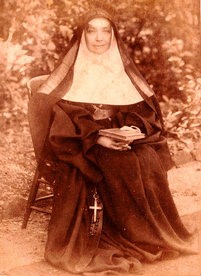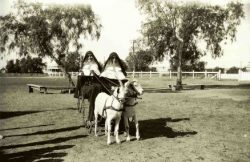Our History
 The Foundress of the Sisters of Mercy was Catherine McAuley, an Irish woman moved by the injustices in society of her time that saw the total neglect of the poor. She set about establishing an organisation which would care for the poor, the sick and the uneducated.She never intended her organisation to become a Religious Order, but was pressured by the Bishops to come under the umbrella of the Church. She and her two companions commenced their religious training at the Convent of the Presentation Sisters at George’s Hill, Dublin. They received the religious habit on the 12th of December, 1831. Catherine was 53 years of age.
The Foundress of the Sisters of Mercy was Catherine McAuley, an Irish woman moved by the injustices in society of her time that saw the total neglect of the poor. She set about establishing an organisation which would care for the poor, the sick and the uneducated.She never intended her organisation to become a Religious Order, but was pressured by the Bishops to come under the umbrella of the Church. She and her two companions commenced their religious training at the Convent of the Presentation Sisters at George’s Hill, Dublin. They received the religious habit on the 12th of December, 1831. Catherine was 53 years of age.By 1861, twenty years after Catherine’s death on 11th November 1841, a small group of Sisters of Mercy, under the leadership of M. Vincent Whitty, landed at the Port of Brisbane, the capital of the newly founded State of Queensland.. Twenty years later the foundation of the Convent School in Roma commenced.
The first Roma Sisters had been professed in Ireland and were from the St. John’s in Tralee. M. Vincent Whitty recruited them for the Queensland Mission when she returned to Ireland in 1871. While several of the Tralee Sisters put their names down to come to Queensland, Sister Mary Xavier Kenyon and Sister Mary Attracta McGillycuddy were the ones chosen and after serving in Brisbane and Rockhampton, were sent to Roma arriving at 10pm on the 9th July, 1881.Within two weeks three more sisters would arrive in town. Both the founding sisters were highly educated women with st. M Xavier Kenton having finished her education in France.
Like all foundations, St John’s had its many difficulties. The Sisters first taught in the Church. This necessitated the Sisters and boarders walking from the present St John’s site to where the present church is situated. Using the church for teaching (this occurred in many places established by the Sisters of Mercy) meant the packing up of desks on a Friday afternoon and preparing the Church for Sunday Mass and then setting up again on Monday for school. This arrangement continued un
til the building of the school in 1913, which was opened in 1914 by Archbishop J. Duhig.
Sr. Mary Xavier Kenyon who was 47 years of age when appointed Superior of St John’s, died in 1887 aged 53. She was the only sister to die here in Roma. An article taken from the country news section of the Australian on the 4th June gives a full account. Her body was laid in state in the church where large crowds came to pray for a life so generously given in the work of God. A large procession followed the hearse bearing her coffin to the railway station where it was placed on the train for the journey to Brisbane and interment in the Sisters of Mercy section of the cemetery at Nudgee.
Sr. M. Attracta McGillycuddy became Superior of St John’s, on the death of Sr M. Xavier, until 1896. Sr M. Attra

cta died in 1911 aged 67. Little else is known about the sisters of the early years at St John’s.
While conditions became somewhat easier over the following years the sisters always struggled financially to (a) exist (b) to provide the necessary educational items to make teaching an easier task. The main income to provide the necessities of life for the personal care of the sisters came from the fees earnt by the Music Sisters. These sisters took as many pupils as possible as the sisters teaching in the school were not paid for their work.
The yearly school fete was a means by which school items could be purchased. The support of the lay people in this and other endeavours by the Sisters, to improve the school facilities, was always gratefully appreciated by the Sisters. State and Federal aid was introduced to non state schools in the late 60’s. In those early days before the establishment of the Catholic Education Office the grant money went to the Parishes. The Sisters were dependent on the local Parish Priest for their remuneration.
In 1941 with the closing of the De La Salle school for boys, the Sisters embarked on a co-educational High School which was officially recognised by the Education Department in 1942. The first Principal of the High School was possibly Sr. Mary Victoire (Cartan). This was war time and Sr. M. Briga Donahue came with girls from All Hallows Convent School which had to be evacuated. Mrs. Margaret Mawm and Mrs. Carmel Mawn joined these All Hallows girls at St. John’s. Sister Briga and the girls returned to All Hallows to finish their education once the danger of bombing abated. Mrs. Margaret Mawn would return to St. John’s staff in 1964 and remain on staff until 1972.
St. John’s High School continued to develop, although under very trying conditions. Roma, like many town communities, struggled financially in the post war years. The High School was conducted in the school building vacated by the Brothers. This building had two large rooms and one small narrow room. The infant class was in the small room. The Junior class next door, and the sub junior class in the other room. Some students who did Grade 1 schooling in this building returned to the same building for the final two years of their school life.
The High School was staffed by one or sometimes two Sisters who taught several subjects. They were aided by Music Sisters or Infant School Sisters who taught commercial subjects.
The Primary School had expanded rapidly over the years and buildings were urgently needed. Sisters were teaching very large classes in cramped conditions. Between 1957 and 1977 three new classroom blocks were erected for the primary classes, the original 1914 classroom was moved, raised and converted into a new library block. The present secondary school buildings were built between 1971 and 1979. The old secondary building was converted into the Home Economics rooms while underneath became the Manual Arts Centre.
The second wooden building (formerly the Brothers’ monastery) became the music Centre for the South West Priority Country Area Program (PCAP). The cost of these buildings was enormous for the Roma community as Federal grants in the early 70’s only totaled approximately 50% of the final cost. The Roma people are to be congratulated for the sacrifices they made and are still making to ensure that students attending St. John’s are afforded the educational opportunities of their counterparts in the larger cities.
The Sisters soldiered on until the late 1970’s. In 1981 Mr. Terry Frawley was appointed as the first lay principal. This was due to dwindling numbers of young women choosing religious life and several Sisters from the early 60’s choosing to volunteer for mission work overseas or social work within Queensland.
It was under the leadership of Principal Mrs. Bruton, that, at the request in 1995 of many parents it was decided to advance St. John’s to Year 12. In 2001, the first intake of Year 11’s was accepted and in 2002, St. John’s had its first Year 12 grandstands.
St John’s is still experiencing growth and currently has 750 students enrolled with over 100 staff. In answer to the Roma and District community needs, in 2018 St John’s opened it’s new primary building consisting of 7 additional classrooms along with it’s state-of-the-art Kindergarten.
Since its foundation in 1881, St John’s School continues to realise the dream of the foundress, Catherine McAuley and her Sisters of Mercy. Hundreds of children have been educated under the guidance of the Sisters of Mercy and lay staff. These students have gone on to being successful in their chosen fields.
Today our school achieves a high standard of education aiming to provide a holistic education for the children in its care: spiritually, academically, socially, physically and culturally. St John’s sees itself as working with home and community towards guiding students through many stages – towards perceptive understanding, mature judgement, responsible self-direction and religious and moral autonomy – to prepare in their becoming fully participating Christians in society.


